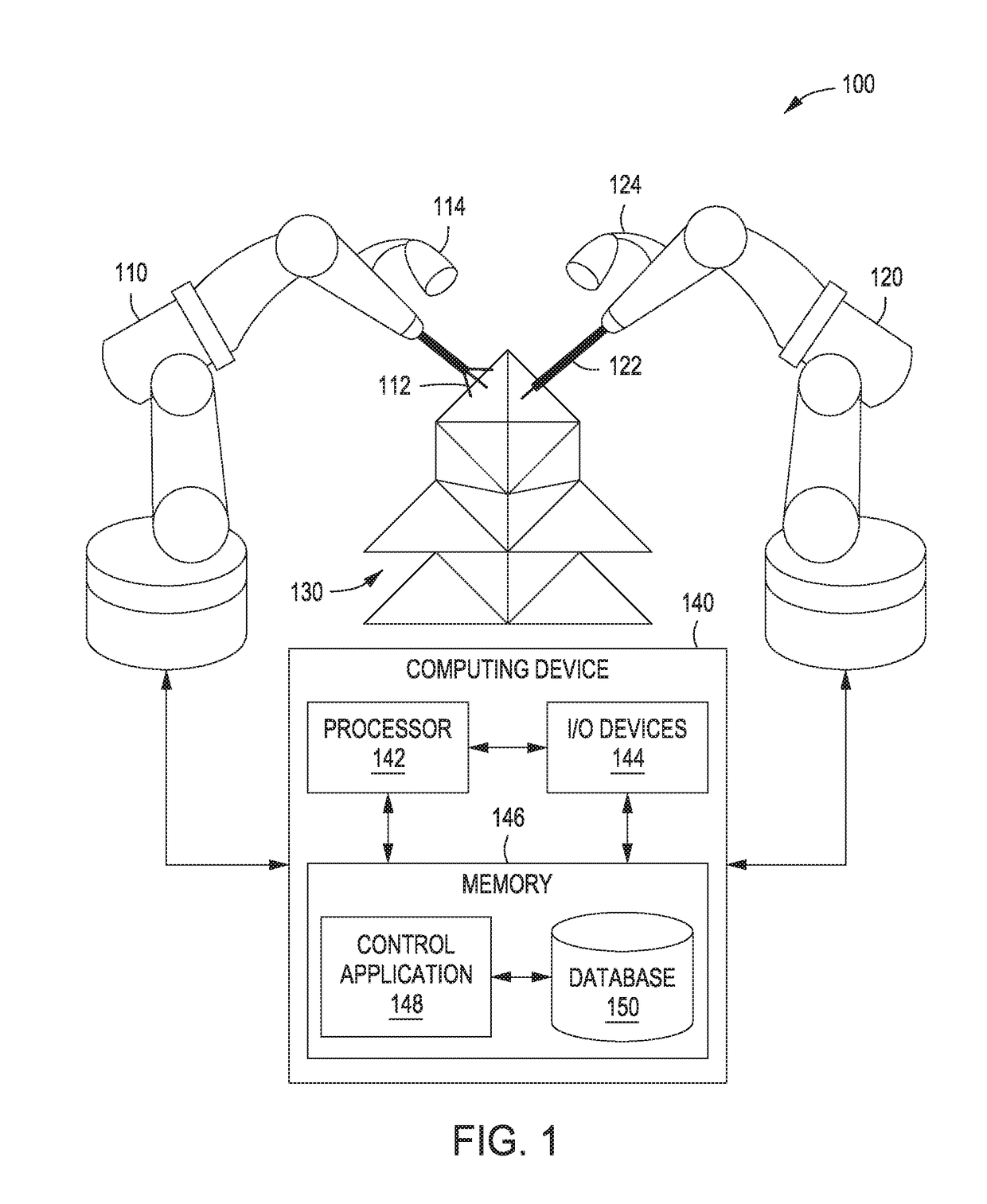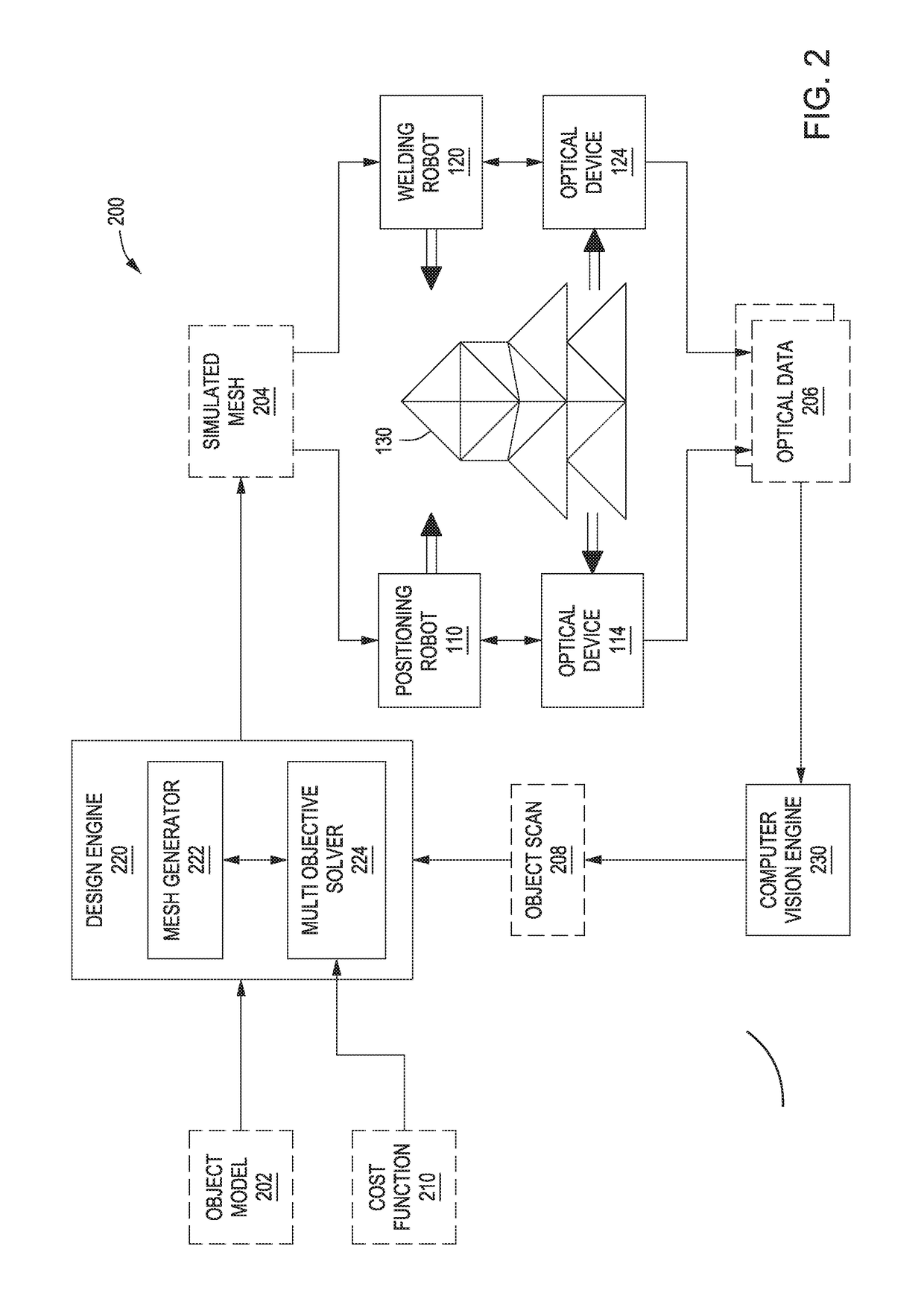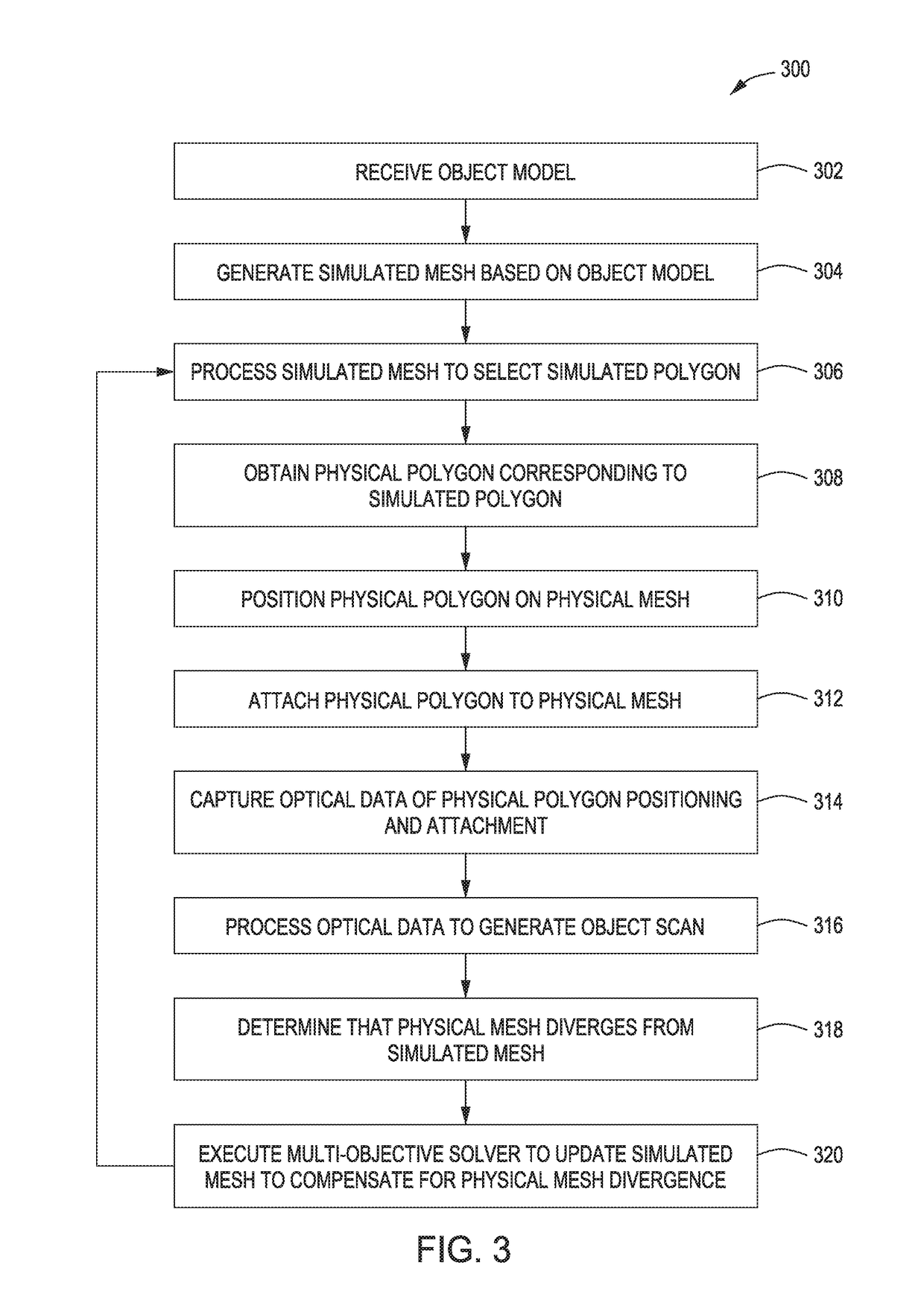Robotic assembly of a mesh surface
a technology of mesh surface and robot, applied in the field of robots, can solve the problems of inconsistent physical objects generated via 3d printing of 3d models, and not based on 3d models
- Summary
- Abstract
- Description
- Claims
- Application Information
AI Technical Summary
Benefits of technology
Problems solved by technology
Method used
Image
Examples
Embodiment Construction
[0015]In the following description, numerous specific details are set forth to provide a more thorough understanding of the present invention. However, it will be apparent to one of skill in the art that the present invention may be practiced without one or more of these specific details.
System Overview
[0016]FIG. 1 illustrates a system configured to implement one or more aspects of the present invention. As shown, a robot system 100 includes a positioning robot 110 and a welding robot 120 configured to cooperatively fabricate a physical mesh 130. Physical mesh may be any technically feasible three-dimensional (3D) structure that includes an assembly of polygons.
[0017]Positioning robot 110 includes a positioning tool 112 and an optical device 114. Positioning tool 112 may be any technically feasible type of manipulator capable of holding, moving, and positioning physical objects. In one embodiment, positioning tool 112 includes a suction device. Via positioning tool 112, positioning ...
PUM
| Property | Measurement | Unit |
|---|---|---|
| optical data | aaaaa | aaaaa |
| optical | aaaaa | aaaaa |
| physical | aaaaa | aaaaa |
Abstract
Description
Claims
Application Information
 Login to View More
Login to View More - R&D
- Intellectual Property
- Life Sciences
- Materials
- Tech Scout
- Unparalleled Data Quality
- Higher Quality Content
- 60% Fewer Hallucinations
Browse by: Latest US Patents, China's latest patents, Technical Efficacy Thesaurus, Application Domain, Technology Topic, Popular Technical Reports.
© 2025 PatSnap. All rights reserved.Legal|Privacy policy|Modern Slavery Act Transparency Statement|Sitemap|About US| Contact US: help@patsnap.com



